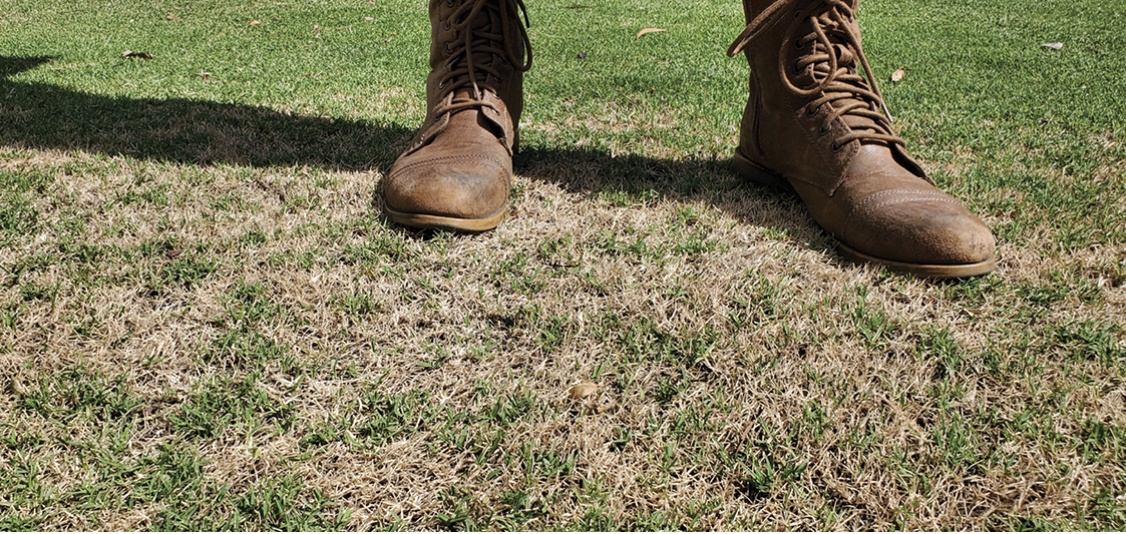How to treat dry spots in your lawn

30 November 2022
Hot and dry weather can really take a toll on even the healthiest lawns and cause them to become thin and patchy. This usually happens over the summer months, as the weather is hot and dry and lawn owners are generally on holidays or too busy to keep up their regular lawn maintenance schedule. It only takes a couple of days of hot, dry weather to affect your lawn.

Usually what you will see is bare patches throughout the lawn or your lawn would’ve started to thin out and change colour. What follows this, is those bare patches bake in the sun and become rock hard making it difficult for water and nutrients to get into the soil. This is commonly known as dry patch and appears regularly in lawns throughout the summer. Thankfully it is treatable and is relatively easy to fix.
First things first, it is always recommended you aerate the affected area of your lawn. Aeration can be done with a garden fork, aerator sandals or a specialised aerator depending on the size of the lawn. This is crucial as it will de-compact your soil and will help nutrients and water penetrate your lawn.
Next, apply a wetting agent like Lawn Soaker to the affected area. Wetting agents come in liquid and granular forms and assist with water absorbing into your soil. This will also allow the soil to hold water in a usable manner for longer. Always remember to irrigate your lawn well after applying the wetting agent.
After this, it is time to stimulate your lawns growth to allow it to self-repair and cover back over. This is best done by applying an NPK fertiliser to the entire lawn and irrigating the lawn well afterwards. Always remember to apply all products at label rates and follow all instructions.
There are steps you can take to reduce the suffering.
- Choose a drought tolerant variety.
- Carry out good soil improvement practices prior to installing.
- Water your lawn correctly, less frequent, deeper soakings to encourage deep roots.
- If possible, give your lawn one deep soaking at the first sign of any heat and drought and then leave it until it starts to wilt, repeating the process as necessary. This will be more frequent in sandy soils.
- Increase the mowing height – slightly longer lawns shade the soil, reducing evaporation and stress.
Always check and abide by the relevant water restrictions in your area as these vary greatly around the country.
How long can your lawn survive without water? Read more here.
Dry patches in your lawn can sometimes be a sign of something else happening with the lawn or soil. Some of the most common reasons for dry patch (dead spots) to occur are:
1. Heat exposure (varied area sizes and shapes) – normally a combination of foot traffic, incorrect or insufficient watering practices, lack of water absorption (hydrophobic soil), reflective heat sources, direct heat over exposure.
2. Dog urine burns (up to 20cm areas and varied shapes).
3. Turf pest damage (varied area sizes and shapes).
As always, if you have any more questions please don’t hesitate to contact us for free expert advice on 1800ALLTURF (1800255873) or 07 5543 8304.
WOULD YOU LIKE MORE INFORMATION?
Contact us for expert advice, or come & say hi at our office in Tamborine!



